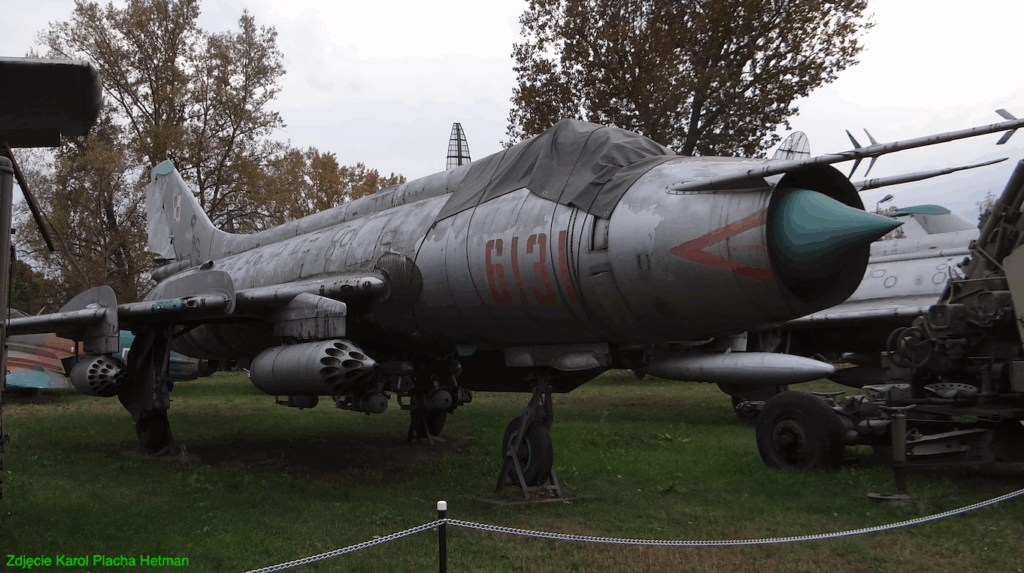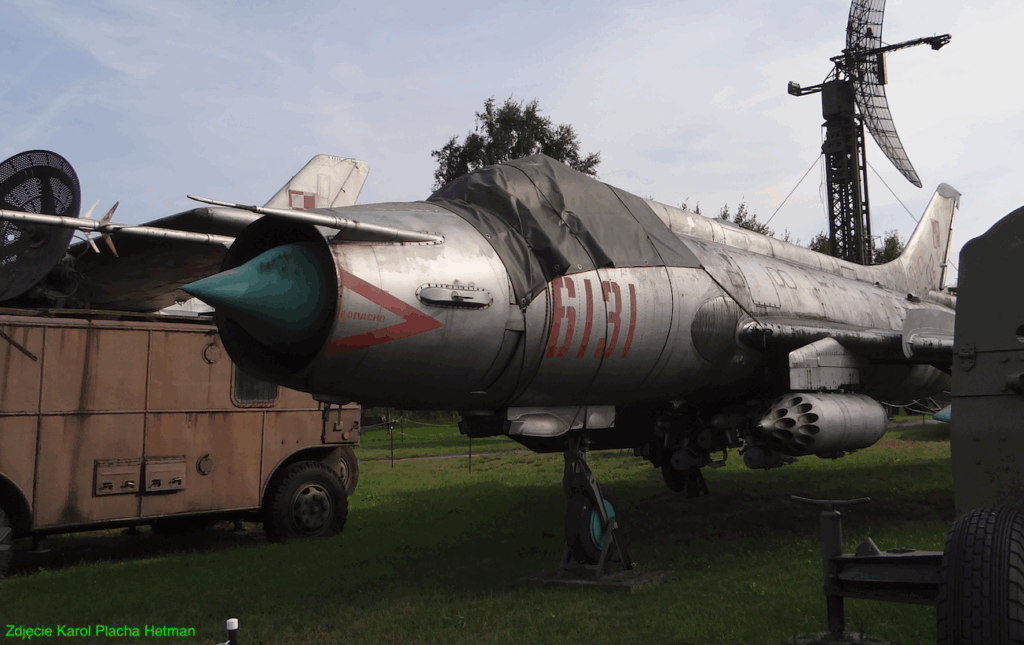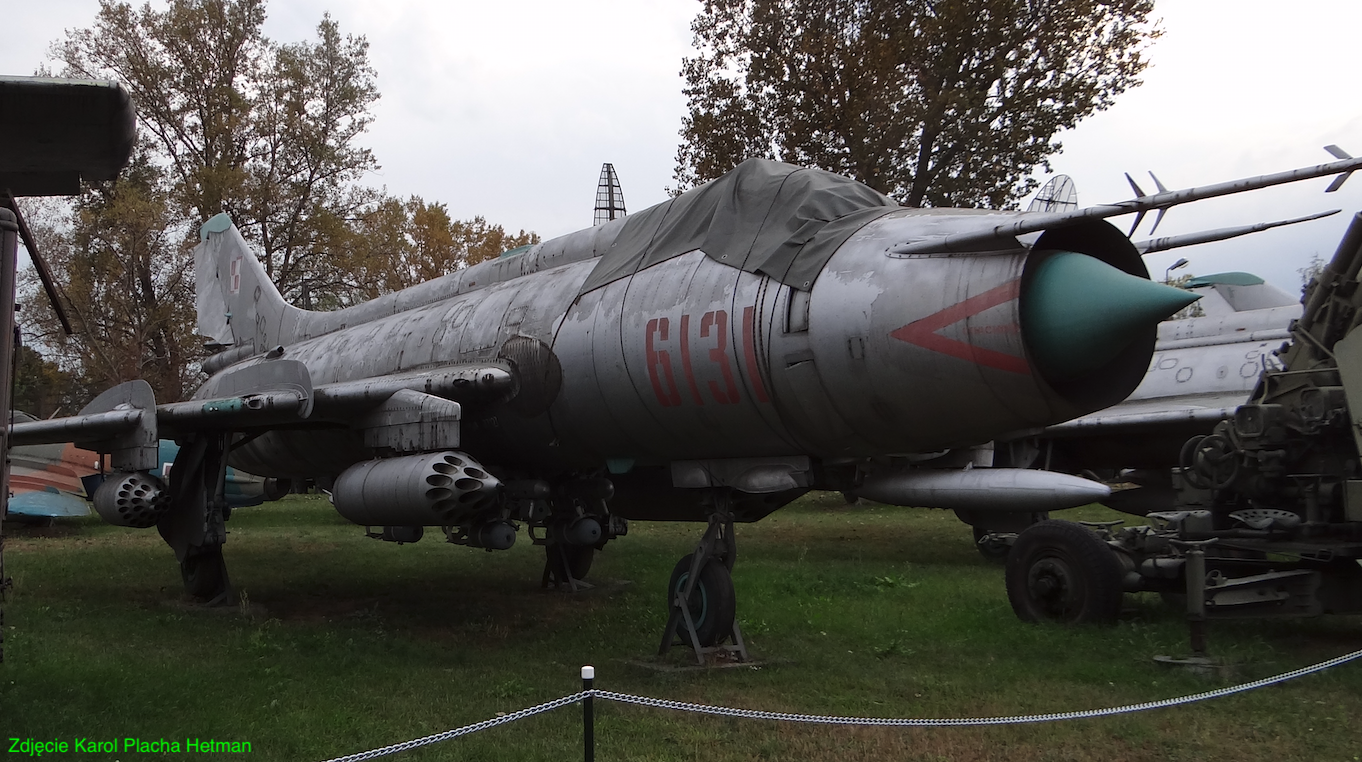Warszawa 2025-05-06
Sukhoi Su-20 nb 6131 strike aircraft.


The Sukhoi Su-20 nb 6131 aircraft no. 76301 was the 7th of its type, out of 27 used in the Polish Army. The aircraft was delivered in 1976. The aircraft was withdrawn from service relatively early, because it did not undergo renovation and camouflage repainting. After service, it was placed in the Museum of Polish Military Technology, Fort Czerniaków in Warsaw.
The aircraft is armed with two B-8W20 pods, which hold 20 unguided S-8 type 80 mm rockets. The weight of the pod is 123 kg, and when loaded it is about 250 kg. The aircraft also has two UB-32 pods, which hold 32 unguided S-5 missiles, caliber 57 mm. The weight of the empty launcher is 103 kg, and when loaded it reaches 265 kilograms. FAB-50 bombs (weight 60 kg) or FAB-100 (weight 100 kg) are suspended under the fuselage. 30 mm cannons, type NR-30, are mounted in the wings and there is a photo gun in the right wing.
The first 6 Su-20s were delivered to Poland in 1974. On 1974-04-26, the aircraft landed at the airport in Powidz. These aircraft received side numbers from 01 to 06, painted red. Of course, these were the planes that were shown to the public during the parade in Warsaw on July 22, 1974. The Polish Army received the remaining planes only in 1976. A total of 25 were purchased. We did not buy the training-combat version, because the Su-7U planes were still used in this role.
Unfortunately, before the main delivery was made, on 1976-02-03, the first Su-20 aircraft was lost. The aircraft received the nb 01. If the aircraft had survived until the changes of side numbers, it would have received the nb 4241. The loss was painful, because another pilot, Maj. (Capt.) pilot Jerzy Doliniec, died. The crash occurred near the town of Kazimierz Biskupi. The cause was a technical defect of the equipment. There was an engine failure, which stopped working. In addition, the entire power supply failed and there were problems with the generators. The failure was due to the manufacturer’s fault, who admitted his fault. Therefore, in place of the lost aircraft, the manufacturer delivered a new aircraft (1977). We received the aircraft on February 12, 1977. The aircraft received the nb 7125. We received the remaining 19 Su-20 aircraft in the summer of 1976. These aircraft received four-digit side numbers derived from serial numbers, painted in red. At that time, the side numbers of the first 6 aircraft also changed.
In Poland, Su-20 aircraft became dual-purpose aircraft. On the one hand, they could effectively attack enemy objects in the depths, and on the other hand, they could conduct active photo and radio-electronic reconnaissance during the day and at night. This second task was performed using a KKR-1 type underslung pod. The pods reached Poland later. It should not be forgotten that the Su-20 used in Poland was also a potential carrier of Soviet tactical nuclear weapons.
The Su-20 aircraft took part in their first joint exercises in 1976, during maneuvers codenamed “Shield-76”. Throughout their service in Poland, Su-20 aircraft were also operated from DOL (airport road sections).
In the 80s, Polish pilots saved Su-20 aircraft from crashing three times, risking their own lives. On May 18, 1984, Captain Andrzej Pawul collided with a stork during a flight. The pilot suffered facial injuries from glass fragments and had limited visibility. However, the pilot managed to land safely. On September 4, 1985, Captain Krzysztof Ryniecki. After launching a heavy S-24 missile, the engine pumped up and the engine stalled. Despite the low altitude of the flight, the pilot managed to restart the engine and land safely at the airport. In 1988, the Su-20 aircraft with pilot Major Krzysztof Krzysztoforski was hit by lightning. The engine stalled. The pilot restarted the engine and landed safely at the airport.
In the mid-1990s, the number of aircraft began to decrease rapidly. The aircraft crumbled due to the end of their airframes’ service life. The end of their service life came in February 1997, when the last aircraft were moved to Bydgoszcz, to the slopes, and then scrapped or to museum exhibits. The last aircraft were removed from the inventory in 1998.
Opracował Karol Placha Hetman

